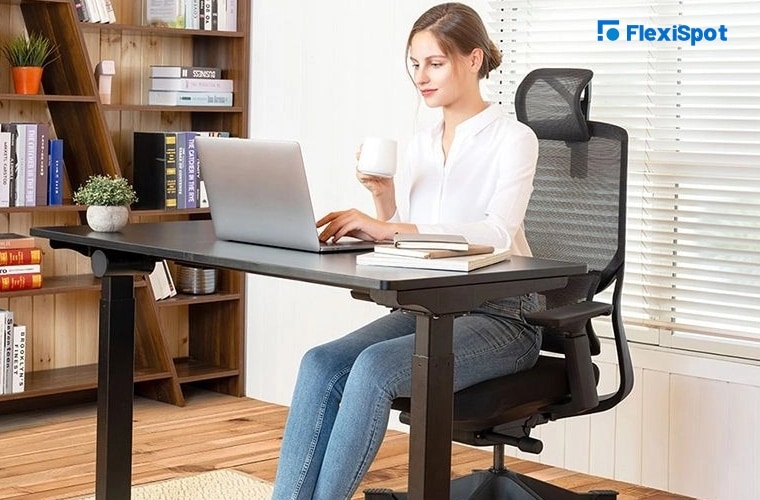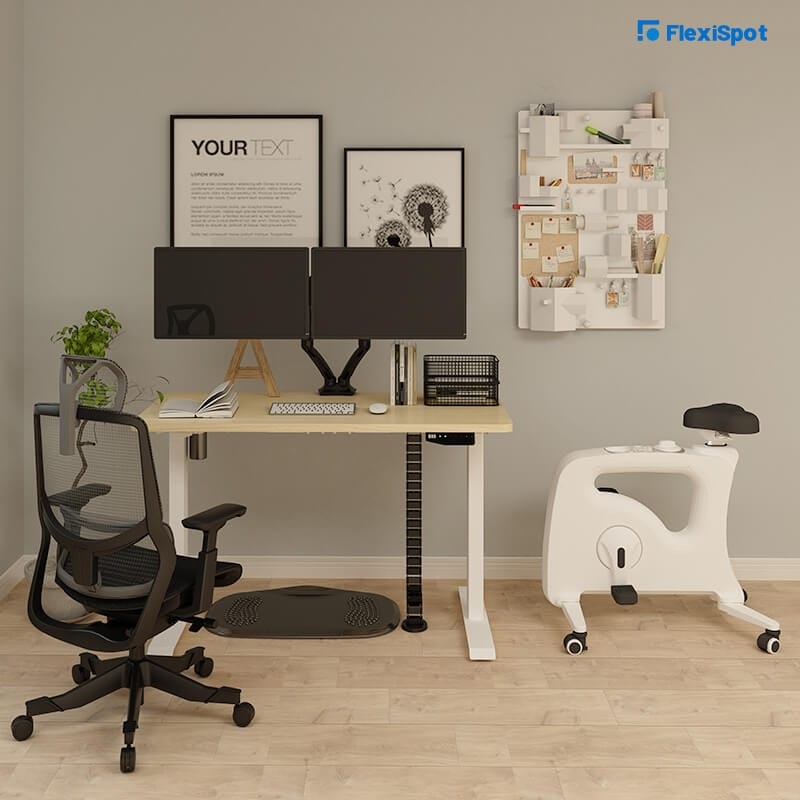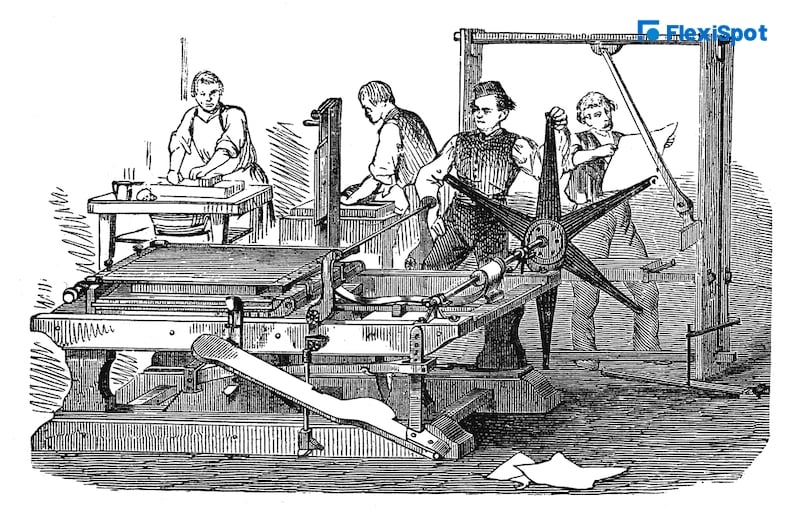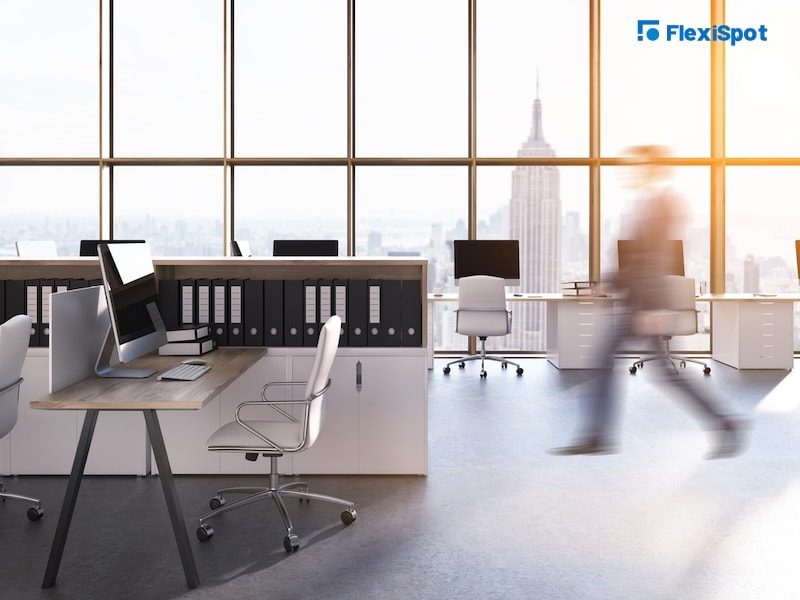
The term office ergonomics isn't new anymore. There was a time when only a few employers were considerate enough to modify and upgrade their office spaces to ensure their employees were working in ergonomic conditions. But today, we see a surprisingly significant number of employers following the lead of setting up ergonomic office spaces.
To work in a safe and comfortable environment is the right of every worker, regardless of the industry they are working in. Be it labor working at a factory or warehouse or a software developer working on their computer, everyone is at an equal risk of developing severe health problems if they continue to work in a non-ergonomic work environment.
But would you believe us if we tell you that the concept of workplace ergonomics isn't new? In fact, it dates back to the time when man started to modify their tasks to make them simpler and easier. The idea of creating and developing tools and equipment to make tasks more comfortable and easier is as old as modern mankind. It's only now that the modernized concept of workplace ergonomics has become mainstream. Pretty cool, no?
We've shed light on the history of office ergonomics in this blog post and have also looked at how far we've come since ancient ergonomics first became a thing.
Understanding Ergonomics
Before anything, you first need to clearly understand what ergonomics is and why it is so important.
Ergonomics is the science of designing products and tools and creating processes that are optimized for the users involved. It involves ensuring that the environment that workers are working in is safe and healthy and all the work-related tools that the workers interact with are designed to offer them maximum comfort and safety.
The concept of ergonomics stems from the fact that a worker can't work at their full capacity and deliver their best if they aren't comfortable or if the tools they've got to interact with are too difficult to use. A worker will be able to work to their full potential only if the processes and tools are simplified and designed such that the worker is able to work without feeling tired or exhausted or putting themselves at the risk of danger and injury.
Workplace injuries aren't uncommon, and most workplace accidents occur because the process flow is not smooth and flawless. Most employers are so focused on getting their work done that they overlook the fact that their processes and work environment might be putting the workers at risk.
But things are different today. The awareness about workplace ergonomics is at an all-time high, and an increasing number of companies are upgrading their offices to be more ergonomic-friendly.
Origin of Ergonomics
As we said above, the term ergonomics may be new, but the concept isn't. The concept originated at the beginning of human civilization. People designed and shaped their weapons and tools with improved accuracy and grip. The pulleys and wheels were designed with brakes and stabilizers to make them safer.
Not only this, the theatres, like the ones in Ancient Greece, were equipped with seats that had curved indentations that indicated that they were designed particularly to offer the lower legs sufficient support during long performances. The curved indentations not only offered support but also reduced numbness of the legs and improved circulation to the lower extremities.
The concept of ergonomics was applied to every area of work. We even see signs of the concept of ergonomics being followed during the Industrial Revolution. The machinery design was tweaked to improve the efficiency and speed of the factory workers. The principles of ergonomics were also applied during World War II to design the plane seats to reduce the occurrence of pilot injury and death.
The Rise in Popularity of Office Ergonomics – The 1900s
By the 1900s, the number of clerical jobs increased. A great many offices were built for the growing desk-based workforce. This was also the time when the first skyscrapers in major cities like New York were built.
This was the beginning of the corporate workplace culture. The offices were designed following the principles of Taylorism. Taylorism was a management method that was established by a mechanical engineer whose goal was to improve the efficiency of all the workers working in factories and offices.
Following the principles of Taylorism, the pioneer and originator of the concept, Frank Taylor, observed the factory workers and the nature of their work closely to figure out which of their motions were essential to get the tasks done and which could be eliminated altogether. The principles were then applied to office workers as well.
This way, the working posture of the workers was significantly improved, and the motions and postures that put the workers at a high risk of developing MSDs and RSIs could be eliminated. The workers were only made to carry out essential movements, which also helped them save their energy and time, thereby enhancing their output.
Taylorism didn't consider the human factor, though. The machine-like movements weren't practical in the long run. Humans need to move other than just for work.
Open Office Plans – The 2000s
The following few decades were when the maximum improvement in office ergonomics was seen and is considered a key phase in the history of ergonomics. Scientists studied human behavior in depth and correlated it with productivity.
During the 1920s, the pioneer of open office design, Le Corbusier, gained popularity. He was the first to suggest that the building design could impact the way humans think and behave. He introduced the idea of an open-plan office and suggested that workers should be made to sit together, and only the managers should have their personal office spaces. His plans were quite uniform, and they encouraged corporate conformity.
However, in the 1950s, the Schnelle brothers rejected the authoritarian office style proposed by Corbusier and proposed the idea of an office design that was more natural and organic, and it encouraged collaboration among workers. Their office plans had more space, break rooms, and plants.
In the 1980s and 1990s, the concept of cubicles became mainstream. But even today, most companies prefer to follow the ideology of the Schnelle brothers because it facilitates natural human behavior and puts worker wellbeing and health on top.
How Far Have We Come?
Today, the concept of ergonomics isn't just an idea but a solid concept that's backed by years of research. It's now a widely known fact that working in the wrong posture and poor ergonomic conditions puts workers at a high risk of MSDs and RSIs and even affects their mental wellbeing.
Today, office ergonomics aren't limited to how a worker works, but it encompasses a lot of factors that can affect the workers, including:
Products and tools at work, including the office chair, desk, keyboard, and mouse.
The height and size of the workstation
The workers' proximity from their workstation
The behavior of workers while they're at work
The environment of the workplace, that includes factors like temperature, humidity, and lighting.
Office ergonomics isn't just one aspect that needs to be fixed but a holistic approach to making the workplace more ergonomics-friendly and safer, and healthier for the workers.

Throughout the 2000s, renowned companies like Facebook revived the Schnelle brother method and normalized an open office plan that was designed to suit the people working in it. Offices are made to be bright, airy, and interesting. Traditional office furniture has been replaced with ergonomic furniture like the Fixed Height Table FD1 -47" W, which offers plenty of desk space and features a multipurpose design and ergonomic office chairs.
Not only are modern offices equipped with ergonomic furniture, but every feature is well-thought, from lighting to noise to temperature, to ensure that the workers are comfortable at work. The more comfortable a worker is at work, the less tired they'll feel, and the better they'll perform.
It took numerous decades to bring about a mindset shift from workplaces being designed to be task-centric to being human-centric. Now that office ergonomics is a widely practiced concept; workplace ergonomics are only going to get better.
We've already started to see changes that we never thought were possible. Employers are encouraging their employees to take breaks between work. An increasing number of employers are seen building activity and break rooms on their premises to give their employees a chance to relax and unwind while at work.
Gone are the days when the employees were expected to stick to their seats and only leave to have lunch or take bathroom breaks. Today, we see employees being given ergonomics training and being encouraged to take small breaks every few minutes to stretch and move around to ensure they aren't sitting in the same posture all day long.
This is a massive change that we see today, and if things continue to move at the same pace, it won't be long before the reported cases of workplace-related injuries, and work-related MSDs and RSIs start to decrease.





